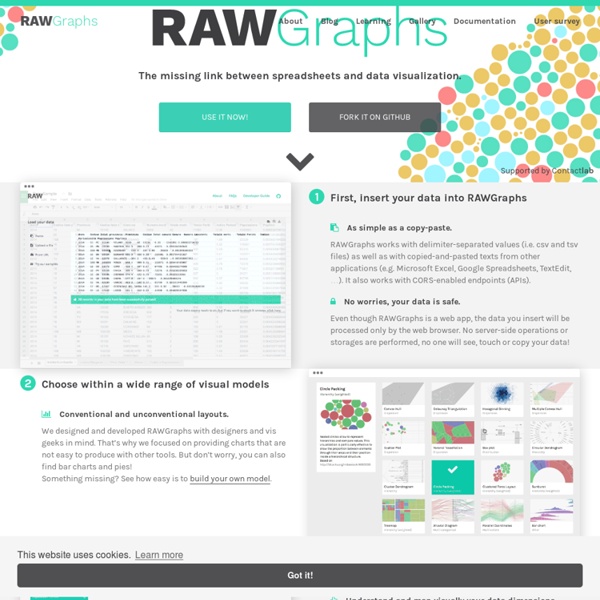



Visual Business Intelligence We typically think of quantitative scales as linear, with equal quantities from one labeled value to the next. For example, a quantitative scale ranging from 0 to 1000 might be subdivided into equal intervals of 100 each. Linear scales seem natural to us. If we took a car trip of 1000 miles, we might imagine that distance as subdivided into ten 100 mile segments. It isn’t likely that we would imagine it subdivided into four logarithmic segments consisting of 1, 9, 90, and 900 mile intervals. How We Use Data to Inspire Design – Design x Data – Medium By Arianna McClain & Rohini Vibha When most people imagine good design, numbers probably don’t come to mind. In fact, anything quantitative might feel completely at odds with the concept of beautiful design.
W. E. B. Du Bois’ Hand-Drawn Infographics of African-American Life (1900) William Edward Burghardt “W. E. B.” Du Bois — sociologist, historian, activist, Pan-Africanist, and prolific author — had also, it turns out, a mighty fine eye for graphic design. Born in Great Barrington, Massachusetts in 1868, Du Bois studied at Fisk University, Humboldt University in Berlin, and Harvard (where he was the first African American to earn a doctorate), and in 1897 he became a professor of history, sociology and economics at Atlanta University. Data Visualization and the Blind Recently, I received an email from a fellow name Mark Ostroff who has written a guide to designing “accessible” content using the Oracle Business Intelligence Suite (OBIEE). In particular, the guide addresses issues regarding impaired vision, such as colorblindness and total blindness. Despite the fact that Mark began by saying that he and I “could be ‘twins separated at birth’ in our orientation about business intelligence,” by the second email in our conversation it became clear that he had a bone to pick. He accused me of shirking my responsibility by not teaching people to design information displays in ways that are accessible to the blind—dashboards in particular. Actually, his accusation was a bit harsher. He suggested that, by failing to teach people to design dashboards in ways that were accessible to the blind, I was encouraging my clients to break the law.
Data Viz for the Visually Impaired - Part 1: Partially Sighted - E-Tabs Data Visualisation is all about visualising data. Whether it is a chart in a report, an infographic or a dashboard– the key point is that it is visual! Visual: ˈvɪʒjʊəl,-adjective – Relating to seeing or sight. So can we deliver a visual representation of data to a person without perfect vision? If so, how can we provide this person the best visualisation? Is there even any reason to cater for such individuals in the first place?
Data Viz for the Visually Impaired - Part 2: Colour Blindness - E-Tabs Following from our previous blog post on how to design visualisation for the visually impaired, we now turn our attention to how best to accommodate colour blind viewers. As many as eight percent of men and 0.5 percent of women with Northern European ancestry have the common form of red-green colour blindness. Men are much more likely to be colour blind than women because the genes responsible for the most common, inherited colour blindness are on the X chromosome. The Work of Edward Tufte and Graphics Press Graphics Press LLC P.O. Box 430 Cheshire, CT 06410 800 822-2454 Edward Tufte is a statistician and artist, and Professor Emeritus of Political Science, Statistics, and Computer Science at Yale University.
SAS enables visually impaired to 'visualize' data Source: SAS Cary, NC (Feb 22, 2017) People with visual impairments are often shut out from hot careers in STEM fields, including analytics and data science.